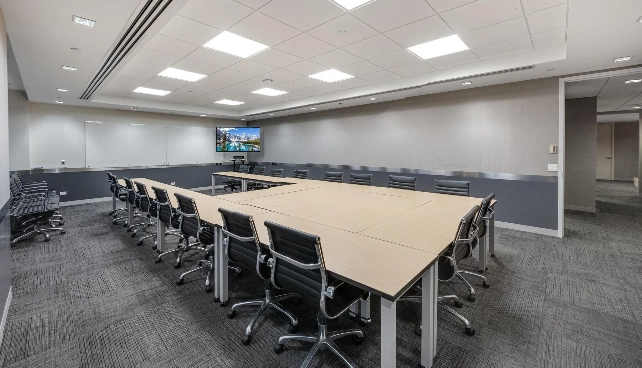A big part of client relations is in building rapport so clients come back to you again and again. When you build that rapport, you often build loyalty. That is the glue that makes a client feel like they are betraying a trusted friend if they hire your competitor for a project.

If you have a trusted hair stylist that you have been going to for years, think about this. If you get your hair cut and colored elsewhere and then come back to your original stylist, she may innocently ask you where you had your hair done but there’s this guilt that tightens in your chest as you explain you were out of town and touching up your highlights really couldn’t wait. This lady has made you look fantastic for years, knows the names of your kids and your dog and somehow she has this magic power over your toddler and can keep him occupied and calm while doing your new do. Notice the paid service was only a fraction of that relationship.
Now, the question arises – how can you establish and maintain client relations when you work remotely? How can you make your client feel loyal to your business when all you are is e-mails and invoices? The answer is that you can’t. You have to make yourself human through virtual means and frequently connect with your client to establish rapport and make sure you are providing the best service or product possible. Here are some tips for doing that.
Meet in person if possible
Do you acquire clients through your web page and communicate with them online? If you have clients in the same city as you, grab a coffee with them. If this feels unnecessary or like overkill, host an event for your clients like a coffee hour or try to acquire some of your customers through networking events where you can actually shake people’s hands and get to know them. In-person communication is the easiest way to get to know people and build rapport. It puts a face to the brand. Think of it this way: it’s easier to switch from Dropbox to Google Drive, two faceless brands, than it is to give up your pleasant morning chats with Tom, the friendly barista, to go to the new coffee shop that just opened closer to your office.
Engage on a personal level
Even if you cannot meet clients in person, find ways to connect with them. Are you building a web page for a dog groomer? Send her a picture of you and your dirt-caked pup along with a joking plea for help. If you send an e-mail to a client, don’t be afraid to wish them a good weekend and say you will be at the lake fishing and can’t wait to get to their project full-force on Monday. Of course, the kind of engagement is appropriate all depends on your brand and the tone you want to communicate but don’t be afraid to be you.
Check in frequently
Communicating online can create some small hurdles to truly understanding each other. You miss social cues, the internet or phone connection might make you miss a word or two, or your client might miss a question you asked in an e-mail. Do not overdo it but if you have a question, ask it and give your client the opportunity to ask you questions as well.
Request feedback
When you show a client a product or they see the results of a completed service while standing right next to you, you can gauge their satisfaction. If they love it, great. If they do not look fully satisfied, you can ask right then if there is an issue and try to resolve it. When you mail or e-mail a product or service, you miss out on seeing the client’s reaction. Make sure you get the client to tell you if they are happy with the final result or if they would like something changed this time or next time. If you are providing a service like designing a brochure, it can be helpful to send drafts and ask the client to make comments on what they like the most and least and if they see any errors. This will improve your ability to address your customer’s wants and needs before sending the final version.
Utilize video conferencing when possible
It is easy to miss social cues like a frown, a hesitation, a look of delight, or wandering attention when using written or voice communication. Videoconferencing is the closest you can get to in-person communication when you are working remotely. This is also a way to show your personality to the client and establish rapport. It gives you a chance to say something funny or notice a customer’s excitement or lack of enthusiasm and engage with them accordingly. It also helps set the tone for written communication, which can be a minefield of misunderstandings where your client is left to interpret the tone in which you intended to convey your message. Have you ever read something in an e-mail and wondered if the person was joking or serious? In a videoconference, it is easier to distinguish between the two. It is also easier to guess the person’s tone in written communication after having spoken to them through videoconferencing and gotten a feel for their personality and communication style.
Use text-based chat programs
Using a text-based chat program where it is easy to write back and forth is better than e-mail when you need a quick response and intend to continue the exchange. It can also be more convenient if you are working with a client and do not need a continuous conversation, as is expected from a video or voice chat, but want to be able to ask quick questions. Imagine you are a software developer and a piece of a larger project has been outsourced to you. You might need information from your client throughout the day to make sure what you are doing matches with the rest of the project. Periodically chatting throughout the day might be necessary but if one of you is in an office setting, voice chat might serve as an interruption to colleagues.
Only use e-mail when necessary
E-mail is great for sending contracts, a long update, or when you need to document someone agreeing to a plan. It is not great for short exchanges or communicating personality.
Use collaborative tools
Do you want your client to see the layout of the brochure you are making for them but you are not comfortable with sending the current version? Make sure you are communicating on Skype, Google Hangouts or another program that allows you to share your screen. Are you doing an outsourced piece of a larger software development project? If your client uses an agile method, try to use the same platforms your client uses to show where you are at in the project and share it with them.
Communicating with your client remotely has its challenges but doing what you can to build rapport and optimize communication can pay off in customer loyalty and an increased ability to provide the best product or service possible.
CoWork. Collaborate. Create.
The opportunities are endless! Book a tour today to see if CoWorking is the right choice for you.
Corporate Suites offers the following services:




